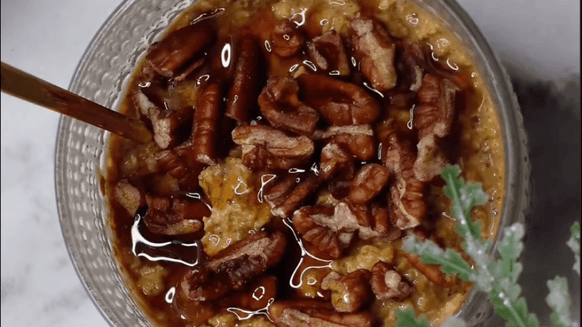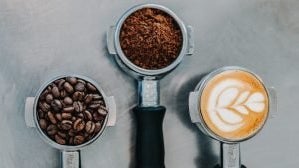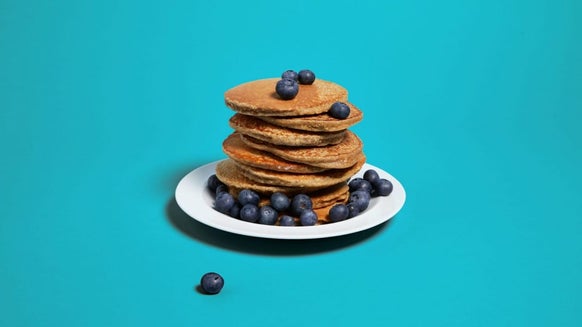Simultaneous muscle growth and fat loss has been a source of great interest in the fitness industry – from vague “turn fat into muscle” statements to bulking and cutting controversies. Nevertheless, without a doubt it can be said that muscle growth and fat loss requires two opposite conditions; respectively anabolic energy surplus and catabolic energy deficit.
Our bodies break down and synthesize various molecules (including muscle-building proteins and body-fat building fatty acids) every day, and the source of our calories can tip the scales in either direction.
What is Carb Cycling?
Carb cycling is simply a nutritional strategy where the amount of consumed carbohydrate varies on a daily or weekly basis. It’s not a diet programme with strictly defined guidelines but a loose concept advocating days of low, medium and high carbohydrate intakes.
Lack of strict definition can be a little confusing as you will see people referring to “carb cycling” when using keto-genic diets (less than 50g of carbs a day) with weekly carbohydrate re-feeds as well as simply throwing in extra carbs post-workout on training days.
Putting the terminology aside you might be wondering why so much attention is paid to carbohydrates? The ultimate fate of carbs is a breakdown to glucose and absorption to the blood-stream, raising the blood-sugar level. This elevation stimulates the release of insulin from the pancreas, which signals the peripheral tissues to absorb glucose, thus reducing blood-sugar levels.
| Increased Muscle Fullness/Hardness |
|
| Increased Muscle Mass |
|
| Increased Bodyfat |
|
The Benefits of Carb Cycling
1. Lean Muscle Mass Growth/Retention
Carb-cycling can be used for both fat-loss and weight gain. The major difference is the number of low-carb days, giving either a net value of calorie deficit or calorie surplus.
By adding a few low carb days during your mass gain programme, you give your body a chance to trim down on some body-fat (due to reduced lipogenesis and increased fatty-acids break-down) you might be putting on.
On the opposite side, by adding a few high carb days during your fat loss programme, you create an anabolic environment; possibly gaining some muscle and definitely holding onto more mass (due to increased amino acids uptake, increased protein synthesis and reduced protein breakdown).
In both of the scenarios, over a week’s time you will be simultaneously losing fat and gaining/retaining muscle.
2. Endocrine Stimulation
It’s been well documented that long periods of low carb intake can decrease the thyroid hormone levels (T3), leading to a reduction in Basal Metabolic Rate (number of calories burnt at rest) which makes it difficult to overcome fat-loss plateaus.
What’s more, low carb intake (30% of calories coming from carbs) has been shown to decrease the free testosterone to cortisol ratio following intensive training in as short as three days. By throwing in higher carb days here and there, you’ll be able to raise the anabolic-testosterone to catabolic-cortisol ratio and welcome back the gains.
Carbohydrate over-feeding can also raise leptin levels – the ‘satiety hormone’ which is produced at the lower rate in response to shrunken fat-cells (fat loss). Obviously being less hungry for few days after a high carb day will help you to stick to your cut.
Similarly, having a good mood following a higher carb day may be helpful in both training motivation and diet adherence. Insulin may help with that by making the tryptophan; pre-cursor of ‘good mood’ neurotransmitter (serotonin) more readily available for the brain.
3. Glycogen Super-Compensation
A few days of low carbs combined with hard training can significantly reduce the amount of glycogen stored in your muscles. This increases the production of an enzyme called glycogen synthase, which works extra hard to turn every little glucose it can into glycogen (which is stored in muscles and liver).
How to Carb Cycle? – Diet Guideline
As previously mentioned, there are no strict guidelines on how to carb cycle. On top of this, the terms “low”, “medium” and “high” carb are very subjective. For some 400g of carbs might be considered medium, whereas for others it might be sky-high, depending not only on body-weight but also the physical activity levels and basal metabolic rate.
The major thing to keep in mind is that the ratio of higher to lower carb days in a week needs to be adjusted based on your goal. For example, for fat-loss the majority of the days should be low carb; for mass-gain the majority of the days should be higher carb; and for maintenance ratio of higher to lower carb days should be roughly 50:50.
Below you can find a table detailing my carb-cycling recommendations, which take into account a typical 4-day training split.
| Goal: | Fat Loss | Weight Maintenance | Mass Gain |
| Goal explained: | Low-carb intake on training days to promote fat loss and medium-carb days to promote recovery on rest days. | Low-carb intake on rest days to avoid fat gain | Higher-carb intake on heavy training days targeting large muscle groups to promote muscle and mass gain |
| Monday: Chest & Triceps | Low-carb (1g per 1kg) | Medium-carb (3g per 1kg) | Medium-carb (3g per 1kg) |
| Tuesday: Back & Biceps | Low-carb (1g per 1kg) | Medium-carb (3g per 1kg) | High-carb (5g per 1kg) |
| Wednesday: Rest | Medium-carb (3g per 1kg) | Low-carb (1g per 1kg) | Low-carb (1g per 1kg) |
| Thursday: Legs | Low-carb (1g per 1kg) | Medium-carb (3g per 1kg) | High-carb (5g per 1kg) |
| Friday: Delts & Arms | Low-carb (1g per 1kg) | Medium-carb (3g per 1kg) | Medium-carb (3g per 1kg) |
| Saturday: Rest | Low-carb (1g per 1kg) | Low-carb (1g per 1kg) | Low-carb (1g per 1kg) |
| Sunday: Rest | Medium-carb (3g per 1kg) | Low-carb (1g per 1kg) | Low-carb (1g per 1kg) |
Carb Cycling Nutrition
What foods are good for carb cycling? Even on your high carb days, choose healthy, whole grain sources of carbs and not refined sugars.
Low Carb Foods
Chicken Salmon Beef Pork Whey protein Avocado Nuts Seeds Asparagus Broccoli Cauliflower Brussels Sprouts Eggs Tofu
Check out our low-carb veggies guide below:
Medium Carb Foods
Milk Yogurt Beans Legumes Quinoa Corn Vegetable juice Tomatoes Peanut Butter Blackberries Raspberries Blueberries Cheese
High Carb Foods
- Raisins
Whole grain bread - Oats/porridge
Pasta Rice Potatoes Apples - Bananas
Try out our creamy Cajun chicken pasta for a high-carb, high-protein meal...
Take Home Message
READ THESE NEXT:

Claire is a Registered Dietitian through the Academy of Nutrition and Dietetics and a board-certified Health and Wellness Coach through the International Consortium for Health and Wellness Coaching. She has a Bachelor of Science in Biology and a Master’s degree in Clinical Dietetics and Nutrition from the University of Pittsburgh.
Talking and writing about food and fitness is at the heart of Claire’s ethos as she loves to use her experience to help others meet their health and wellness goals.
Claire is also a certified indoor cycling instructor and loves the mental and physical boost she gets from regular runs and yoga classes. When she’s not keeping fit herself, she’s cheering on her hometown’s sports teams in Pittsburgh, or cooking for her family in the kitchen.
Find out more about Claire’s experience here.
- Pigman, W. (Ed.). (2012). The carbohydrates: chemistry and biochemistry. Elsevier.
- Soenen, S., Bonomi, A. G., Lemmens, S. G., Scholte, J., Thijssen, M. A., Van Berkum, F., & Westerterp-Plantenga, M. S. (2012). Relatively high-protein or ‘low-carb’energy-restricted diets for body weight loss and body weight maintenance?. Physiology & behavior, 107(3), 374-380.
- Bolla, A. M., Caretto, A., Laurenzi, A., Scavini, M., & Piemonti, L. (2019). Low-carb and ketogenic diets in type 1 and type 2 diabetes. Nutrients, 11(5), 962.
- Loucks, A. B., & Heath, E. M. (1994). Induction of low-T3 syndrome in exercising women occurs at a threshold of energy availability. American Journal of Physiology-Regulatory, Integrative and Comparative Physiology, 266(3), R817-R823.
- Lane, A. R., Duke, J. W., & Hackney, A. C. (2010). Influence of dietary carbohydrate intake on the free testosterone: cortisol ratio responses to short-term intensive exercise training. European journal of applied physiology, 108(6), 1125-1131.
- Kong, A., Neuhouser, M. L., Xiao, L., Ulrich, C. M., McTiernan, A., & Foster-Schubert, K. E. (2009). Higher habitual intake of dietary fat and carbohydrates are associated with lower leptin and higher ghrelin concentrations in overweight and obese postmenopausal women with elevated insulin levels. Nutrition research, 29(11), 768-776.
- Goforth Jr, H. W., Laurent, D., Prusaczyk, W. K., Schneider, K. E., Petersen, K. F., & Shulman, G. I. (2003). Effects of depletion exercise and light training on muscle glycogen supercompensation in men. American Journal of Physiology-Endocrinology and Metabolism, 285(6), E1304-E1311.







